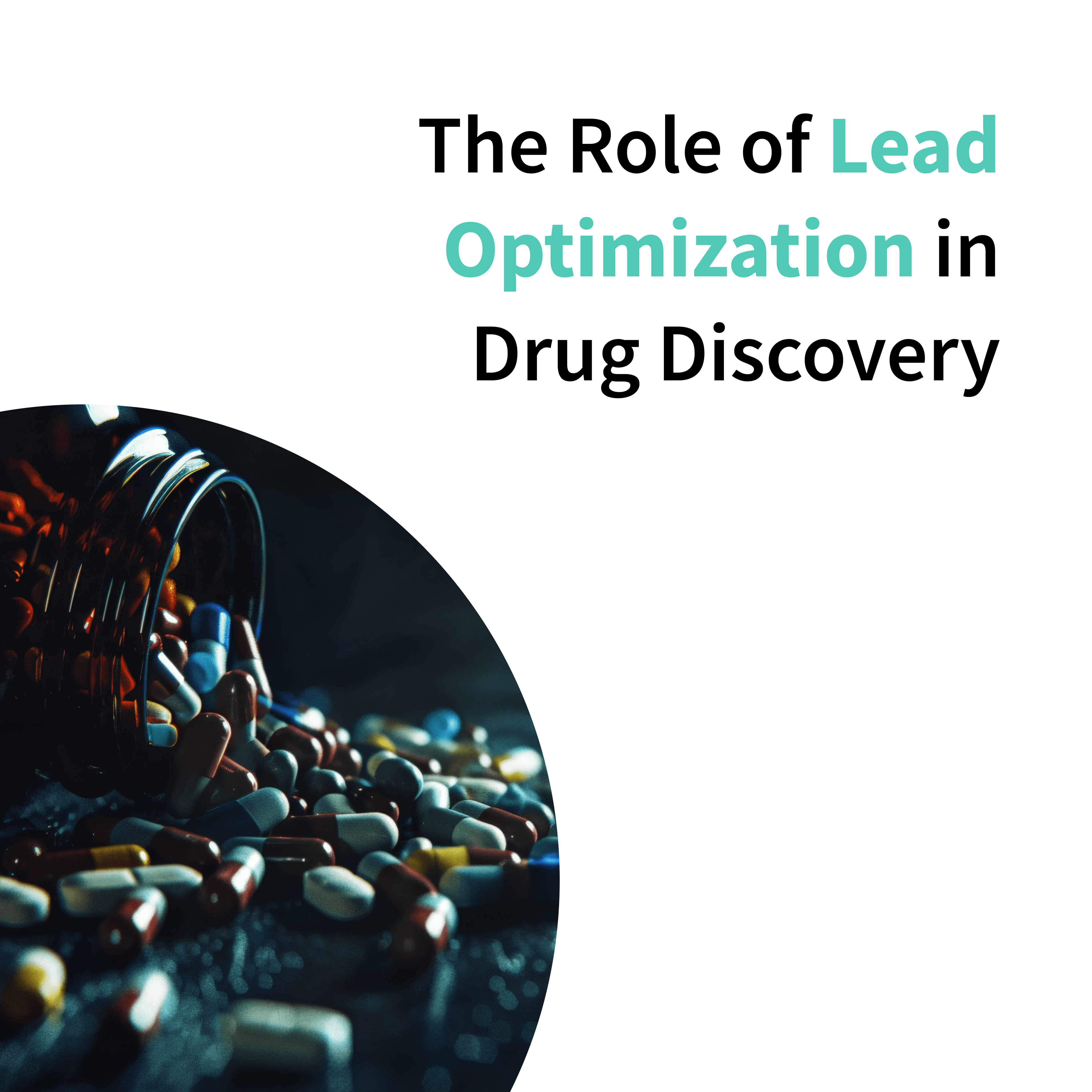The Role of Lead Optimization in Drug Discovery
The Drug Discovery and Development process consists of several sequential steps that aim to ensure a safe and effective profile of a new drug candidate before market approval.
In particular, in the pre-clinical phase it is crucial to elucidate promising candidates to hopefully reach a clinical trial. The step that allows the passage between these two phases is defined as drug lead optimization, the final phase of the Drug Discovery process.
Starting from lead identification in Drug Discovery, in this article we’ll define what a lead is, in order to understand what is lead optimization in Drug Discovery and why its role is crucial to ensure the best drug candidates for human testing in clinical trials.
Navigating Through Lead Optimization and Identification
A "lead" refers to a compound that has demonstrated the potential to become a pharmaceutical drug during the early stages of the Drug Development and Drug Discovery process. Leads are identified after initial screening evaluations that indicate that the compound has a looked-for effect on a biological target that is involved in a disease process. However, these compounds are typically not ready for clinical trials as they may require further optimization to improve their overall profile such as toxicity, safety, and efficacy.
Lead identification in the Drug Discovery and Drug Development process commences after a biological target associated with a disease has been identified and validated. The process starts with High-Throughput Screening (HTS) where vast libraries of compounds are tested against the target to identify those that exhibit the desired biological activity. The compounds that show positive results in these screenings are called 'hits'. These hits are subjected to further testing to confirm their activity across various assays to ensure reliability and to rule out false positives. The hits that pass these stringent tests are then evaluated for their chemical structures and mechanism of action on the target. This rigorous evaluation helps narrow the list of drug candidates, determining the advancement of the most promising hits to the next level, where they will be called “leads”.
Once leads are identified, the drug lead optimization phase begins. Leads optimization in Drug Discovery focuses on refining the chemical structures of the new leads to enhance their drug-like properties and address any pharmacological deficiencies. Chemists undertake systematic alterations of the leads, varying functional groups or the molecular backbone to improve properties such as potency, selectivity, and stability. Each modification is carefully analyzed to see how it affects the compound's interaction with the biological target.
Leads’ pharmacokinetic properties are also critically assessed during drug lead optimization: techniques such as mass spectrometry and nuclear magnetic resonance are employed to study their metabolic drug profile, helping to predict and mitigate potential toxic effects.
Early toxicity evaluations in drug lead optimization are, thus, carried out both in vitro and in vivo to identify any potential safety issues that could impede further development. Once a lead has been optimized and meets all the required criteria, including demonstrated toxicity, safety, and efficacy profile, as well as manufacturability, it moves into the pre-clinical studies. This phase involves more extensive safety evaluations in animal models, followed by clinical trials involving human testing.
How Lead Optimization Shapes Drug Development
Animal testing during pre-clinical studies, which typically involves models such as mice or other rodents, is not only a highly regulated practice but also extremely costly, time-consuming, and ethically concerning. Gaining insights into leads’ in vivo behavior before advancing to the pre-clinical phase can thus prevent significant resource surplus and optimize the entire Drug Development process, underlying the crucial role of lead optimization in Drug Discovery.
Zebrafish as a New Alternative Model (NAM) has emerged as a powerful tool within drug leads optimization, as their use in Drug Discovery and Development complies with the 3Rs principle of Replacement, Refinement, and Reduction of animals. This NAM has a high genetic homology with humans (>70%), and shares more than 80% of the genes implicated in human diseases (>80%), making it an ideal model for lead optimization. Thanks to their unique phenotypical features, such as transparency during early development, Zebrafish allow for real-time visualization of drug effects, providing invaluable insights into the drug’s pharmacological and toxicological profiles.
Moreover, the prolific breeding, rapid development, and small size underlie their time and cost-effectiveness, as they require less space and resources than mammalian models. All these characteristics make Zebrafish a highly suitable model for developing toxicity testing and phenotypic screening in a High-Content Screening (HCS) format. In this context, Biobide has developed the Acutetox Assay, a simplified version of the OECD (Organization for Economic Co-operation and Development) TG 236 Guideline, that can be implemented to elucidate lead compounds in a High Content Screening platform.
The use of in vivo models such as Zebrafish during drug lead optimization, not only facilitates a deeper understanding of a lead’s in vivo behavior but also significantly contributes to the refinement of drug candidates, ultimately shaping the trajectory of the whole Drug Discovery and Development process towards more effective and safer therapeutic solutions.
Sources
1. Hoffer L, Muller C, Roche P, Morelli X. Chemistry-driven Hit-to-lead Optimization Guided by Structure-based Approaches. Mol Inform. 2018;37(9-10):e1800059.
2. Ashenden SK. Chapter 6 - Lead optimization. En: Ashenden SK, editor. The Era of Artificial Intelligence, Machine Learning, and Data Science in the Pharmaceutical Industry. Academic Press; 2021. p. 103-17.
3. Patton EE, Zon LI, Langenau DM. Zebrafish disease models in drug discovery: from preclinical modelling to clinical trials. Nat Rev Drug Discov. 2021;20(8):611-28.
4. MacRae CA, Peterson RT. Zebrafish as tools for drug discovery. Nat Rev Drug Discov. 2015;14(10):721-31.



